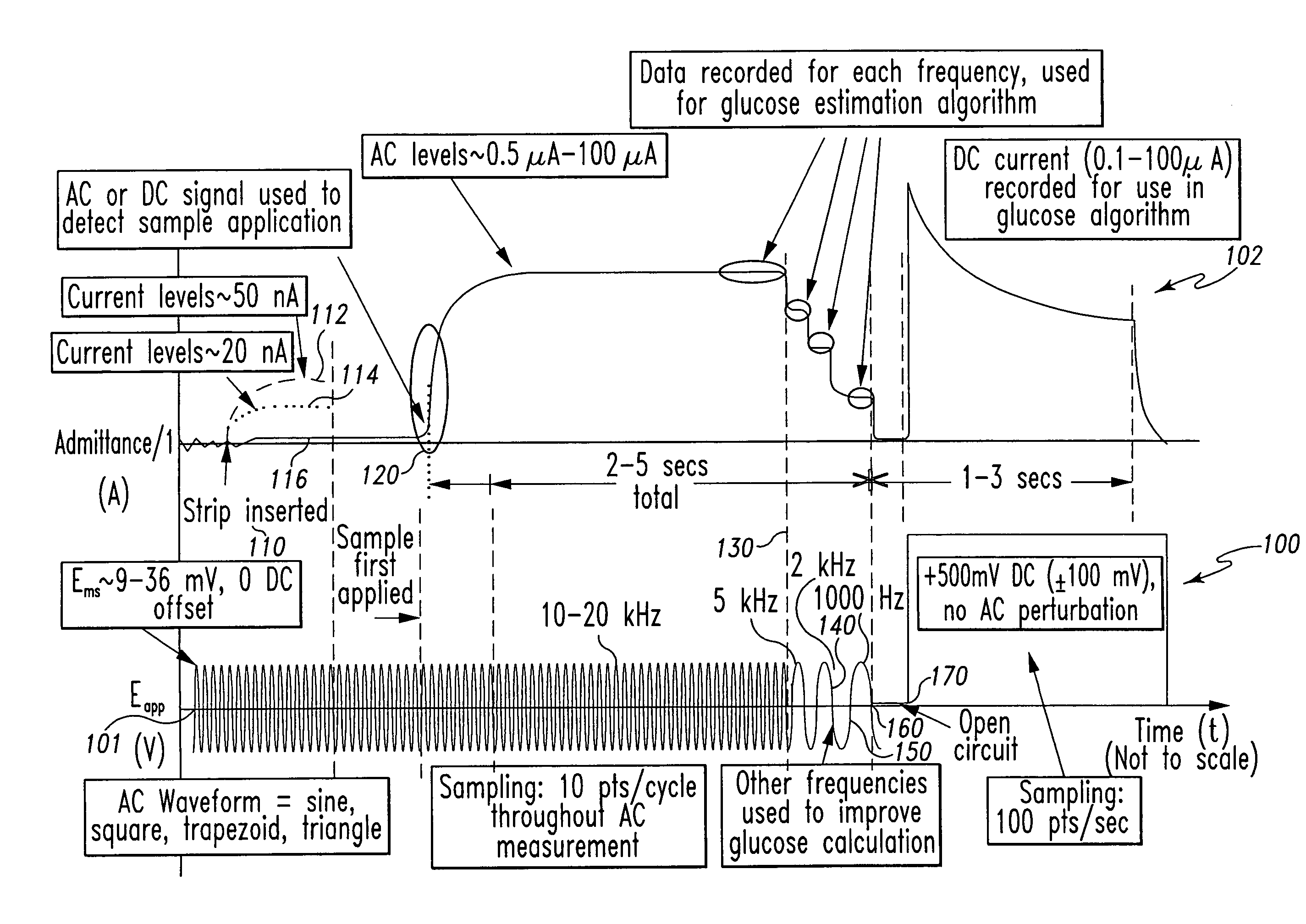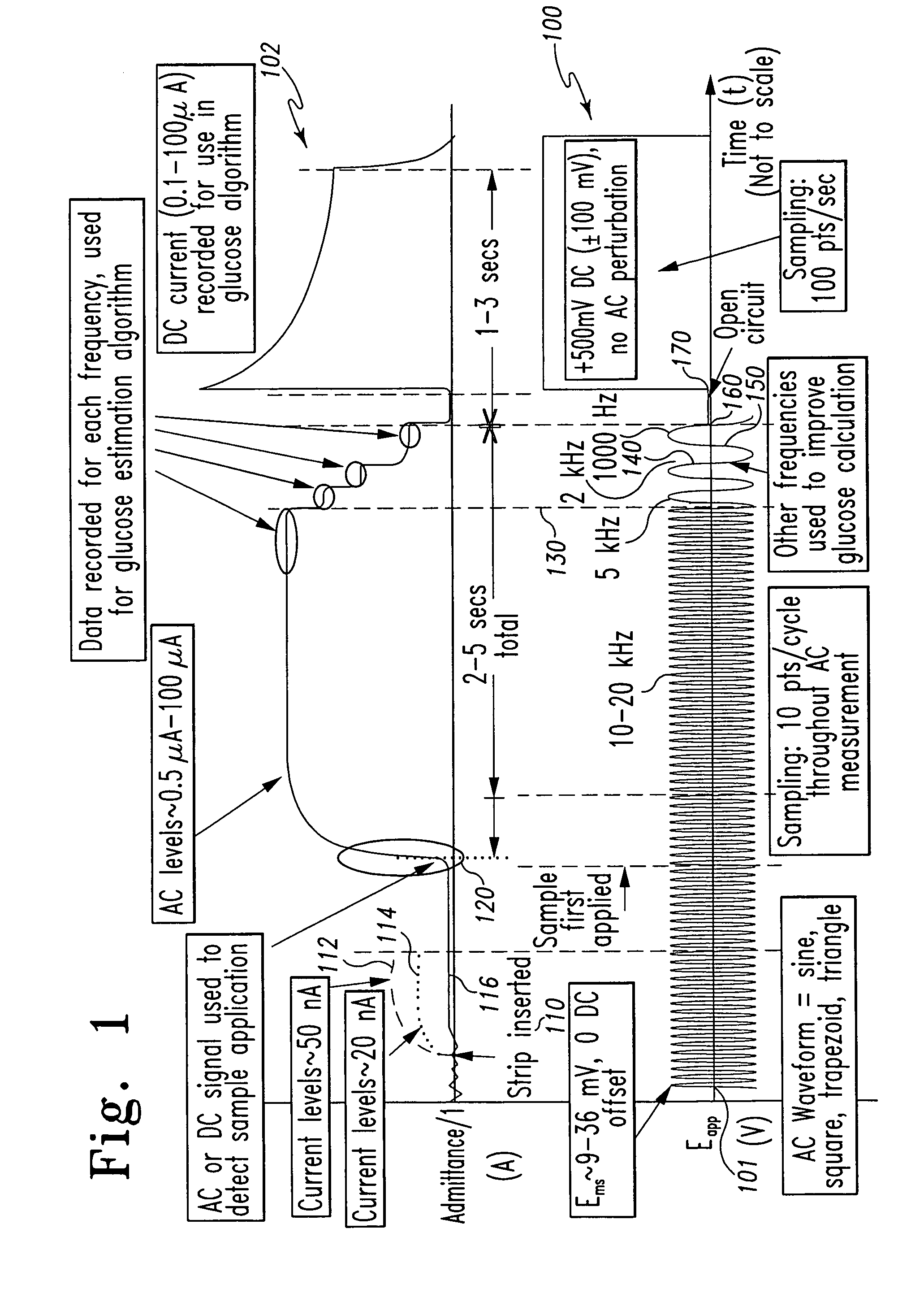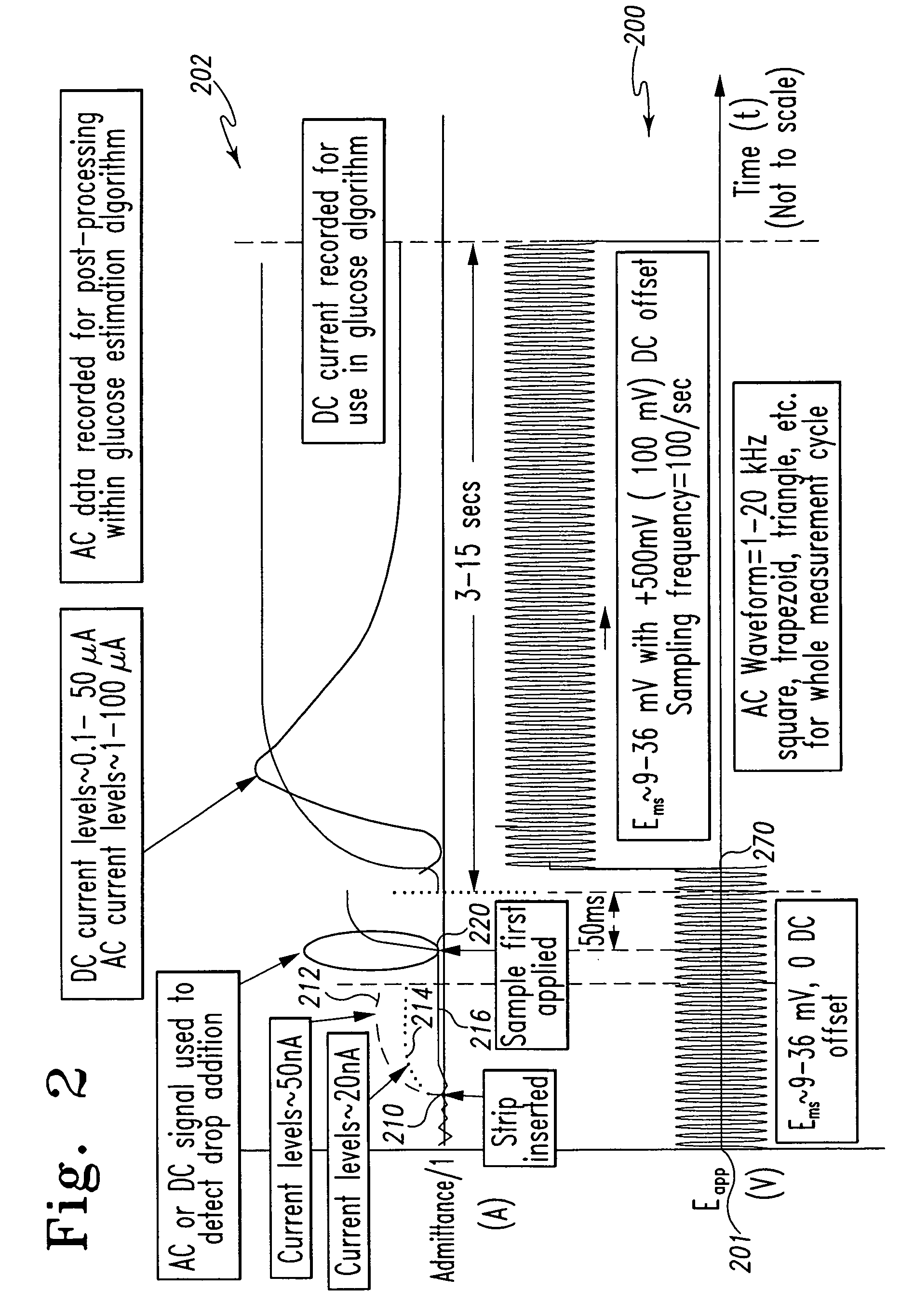System and method for analyte measurement
a technology of analyte and system, applied in the field of analyte measurement system and method, can solve the problems of deprived diabetic of use of fingers, hands, feet, electrochemical methods of measuring the concentration of a chemical in blood, and proved to be problemati
- Summary
- Abstract
- Description
- Claims
- Application Information
AI Technical Summary
Benefits of technology
Problems solved by technology
Method used
Image
Examples
example 1
DC-Only Measurement Dose Response Study
[0069]The measurements made in Example 1 were achieved using the test strip illustrated in FIGS. 3A-B and indicated generally at 300. The test strip 300 includes a capillary fill space containing a relatively thick film reagent and working and counter electrodes, as described in U.S. Pat. No. 5,997,817, which is hereby incorporated by reference. The test strip 300 is commercially available from Roche Diagnostics Corporation (Indianapolis, Ind.) under the brand name Comfort Curve®. The ferricyanide reagent used had the composition described in Tables I and II.
[0070]
TABLE IReagent Mass Composition - Prior to Dispense and DryingMass forComponent% w / w1 kgsolidPolyethylene oxide (300 kDa)0.8400%8.4000gsolidNatrosol 250M0.0450%0.4500gsolidAvicel RC-591F0.5600%5.6000gsolidMonobasic potassium phosphate1.2078%12.0776g(annhydrous)solidDibasic potassium phosphate2.1333%21.3327g(annhydrous)solidSodium Succinate hexahydrate0.6210%6.2097gsolidQuinoprotein g...
example 2
Combined AC and DC Measurement of Capillary Blood Samples
[0076]The measurements made in Example 2 were also achieved using the test strip illustrated in FIGS. 3A-B and indicated generally at 300. As described above, the test strip 300 includes a capillary fill space containing a relatively thick film reagent and working and counter electrodes, as described in U.S. Pat. No. 5,997,817, which is hereby incorporated herein by reference.
[0077]In the measurements, capillary blood samples from various fingerstick donors were applied to test strip 300 and the excitation potentials illustrated in FIG. 4 were applied to the electrodes. The excitation comprised a 2 kHz 40 mVrms AC signal applied between 0 seconds and approximately 4.5 seconds after sample application, followed by a 300 mV DC signal applied thereafter.
[0078]In this Example 2, the AC response of the sample was derived as admittance (the inverse of impedance). The admittance response is proportionate to the hematocrit level of th...
example 3
Use of AC Phase Angle to Estimate Blood Glucose Levels and Hematocrit
[0082]The measurements made in Example 3 were also achieved using the test strip illustrated in FIGS. 3A-B and indicated generally at 300. As described above, the test strip 300 includes a capillary fill space containing a relatively thick film reagent and working and counter electrodes, as described in U.S. Pat. No. 5,997,817, which is hereby incorporated by reference. Because hematocrit levels from capillary blood samples typically vary only between 30%-50%, spiked venous blood samples having a hematocrit range from 20%-70% were used for this Example 3. Five levels of glucose, temperature (14, 21, 27, 36 and 42° C.) and hematocrit (20, 30, 45, 60 and 70%) were independently varied, producing a covariance study with 125 samples.
[0083]In the measurements, blood samples were applied to test strip 300 and the excitation potentials illustrated in FIG. 10 were applied to the electrodes. The excitation comprised a 2 kHz...
PUM
| Property | Measurement | Unit |
|---|---|---|
| frequency | aaaaa | aaaaa |
| frequency | aaaaa | aaaaa |
| frequency | aaaaa | aaaaa |
Abstract
Description
Claims
Application Information
 Login to View More
Login to View More - R&D
- Intellectual Property
- Life Sciences
- Materials
- Tech Scout
- Unparalleled Data Quality
- Higher Quality Content
- 60% Fewer Hallucinations
Browse by: Latest US Patents, China's latest patents, Technical Efficacy Thesaurus, Application Domain, Technology Topic, Popular Technical Reports.
© 2025 PatSnap. All rights reserved.Legal|Privacy policy|Modern Slavery Act Transparency Statement|Sitemap|About US| Contact US: help@patsnap.com



